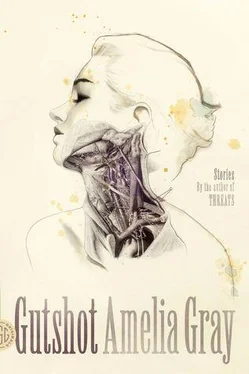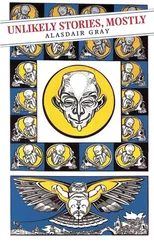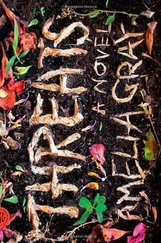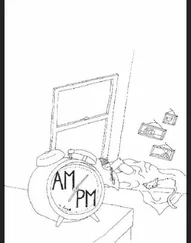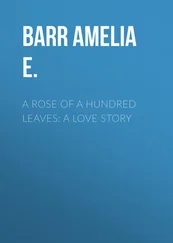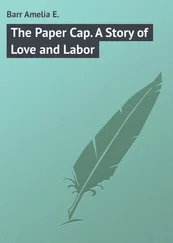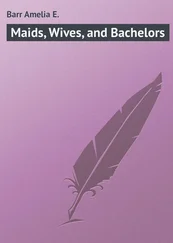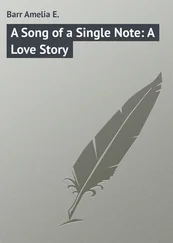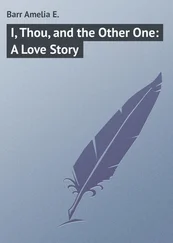“I’m glad to know him,” I heard Connie say.
It was a thrilling statement, but I knew better than to stop and try to hear more. The journey was providing an immediate reward, and though I was panting and making a heavy noise in my footfalls, the conversation seemed somehow amplified the closer I came to the center. Their voices provided sound’s equivalent of a compass star in the dusking sky.
“He has a strong heart,” a man said.
“I’m so proud of him,” said Dale.
“Actually, I find him pretty handsome,” added Connie.
Their voices buoyed me on, losing only slight volume when I was heading away from them, and I broke into a trot that carried me around the far side, taking the turns without pause, drawn all the while by the trivet, which seemed towed on a wire. “I wish he’d come out here so I could shake his hand,” someone said wistfully, but there was no way to stop. The switches were coming faster and the path narrowed, as if Dale hadn’t quite figured out the proportions required. Young leaves brushed my shoulders.
I didn’t realize my exhaustion until, turning the last corner, I found the center. The moon shined a straight beam into the clearing, which was six feet wide, with a divot in the dirt the size of a man. The trivet was straining toward the ditch. It took my whole strength to hold it back and my strength was failing. But I had to keep it safe. Dale had given it to me with two hands, looking me in the eye.
With the last of my power, I turned to stand between my burden and the pit. The trivet did its work from there, pushing me back and down, into the hole that seemed to have been dug to suit me, complete with a rise in the dirt for my neck and a uniform pile just below my feet. The trivet settled in the center of my sternum. It grew cold there and heavier than before, though I felt no desire to move from under its wind-removing weight. I saw now that it was a stone like any other. I found that once I stopped struggling and held very still, barely breathing against its mass, I could hear the crowd again. They were telling stories of my heroism and bravery, of underwater rescue and diplomacy — tales I couldn’t remember being a part of, though surely I was involved in some way, if so many recalled them so fondly. Eventually I did try to stand, at which point I realized the trouble.
“Folks?” I said, quietly at first. “I think I got stuck on a root structure or something.”
They continued their talk, even grander than before. Someone brought out a guitar and began to improvise songs which told my origin story. Born to a rancher just a little west of here / Jim raised his head and never cowered out of fear , went one line. My lungs struggled to fill against the weight of the stone.
“Dale?” I called out, gasping. “I need help. Can you bring a crowbar?” I was being driven down into the dirt as if by a machine press. The carved glyphs bit into my chest and branded my skin. I was alone. Then I met the Minotaur.
The young inventor created a device that could predict the future within one-tenth of a percent of accuracy.
“Device,” he said, “tell me the winner of this Saturday’s football game with Tech.”
“State wins,” the device said. “A man will pour beer onto his jeans.”
“Seems likely,” he said, marking it. He thought of his girlfriend. “Tell me, will I marry Anne?”
“No,” the device said. “Anne will move to Missouri. You will find a similarly adequate mate. The colors associated with your wedding will be sea green and ivory.”
The young inventor had been dating Anne for ten years. He took the news with the composure of a scientist and adjusted a knob on the device.
“Sea green and ivory,” the device repeated. It sounded flat and bored, and the scientist made a note to swap out the vocalization for something a little more upbeat, perhaps accompanied by music.
“What will my eventual mate be like?” he asked, tweaking the machine’s color wheel.
“Skin, hair.” The device buzzed lightly. “Fingernails.”
“Not too much specificity there.”
The buzzing stopped. “Grass and milk.”
“Will she be interested in science?”
Some process caused a turning over in the internal works of the device.
The inventor tapped the panel. “Will we be happy?” he asked. He could hear the whirring. “Device, will we be happy?”
The device was silent. After a while, the young inventor packed his things, collected his lunch bag from the refrigerator, and left.
The empty room had its own energy. “Algae and bone,” said the device.
The Swan as Metaphor for Love
A swan’s foot, like a duck’s, is a webbed claw. In traversing swan shit and mud, these claws naturally gunk up and reek. Nobody in the history of the world, save another swan, has licked a swan’s foot while that foot was still attached to the swan. The feet resemble rabid bats in their sickly color and texture.
Moving north on the swan’s undercarriage, one will find an eroded civilization of swan shit and pond scum. This is a banal phrase, “pond scum,” one that is easily ignored, but look closer. Swans eat grasses, sedges, and pondweed, each teeming with murk. They will also eat insects, snails, and a fresh shrimp if they’re near one.
Pond scum is more of the same: swan shit, fish shit, frog shit, half a can of beer poured by some fuck teenager, plastic, photosynthetic residue, algae, permanent bubble, hexagon patch freed from its soccer ball, arthropod corpse. All attached to the swan in its idiot float through its stagnant little inland sea.
Swans eat tadpoles. A swan will slurp up entire schools of larval amphibians, process them, and shit them out, and then sometimes it will sit in the shit or walk through it, and here we are. Anyone who claims that a swan is a majestic and noble creature has never seen a swan up close.
Swans will attack you if you are nearing their young or their nest, if you are trying to have a conversation with their mate. They have jagged points on their beaks, which resemble teeth but more closely resemble a plumber’s saw, which plumbers call a Tiny Tim. If you try to take a swan’s picture he will strike you with his beak. Too much attention enrages a swan. The swan has a long neck and will strike at you. The swan will bite you and tear your flesh.
Swans mate for life, which is maybe ten or fifteen years. Someone found a swan once that was twenty-four years old and probably it was mating for life, which everyone made a big deal out of even though the swan was not even old enough to rent a car. The swan wasn’t yet acquainted with life enough to silently hyperventilate in its bed. The swan didn’t have a bed. The swan was too stupid to have a bed and if it did it would fill the bed with swan shit.
That’s all for today about swans.
They didn’t think it would last all year. Ten months at the most. When the snake appeared as a broad green sunrise on the horizon it was January, an inhospitable month for snakes. But this was no ordinary snake. It crested the far range and barreled down the main road, flattening trees like wet reeds in its path. It towered over the farm mercantile and humbled the line of threshing machines. The townspeople ran from the square, but the snake settled and didn’t move to coil around anyone, not even the smaller pets. It wedged silent between the south awning of the schoolhouse and the north entrance of the bank.
The snake stayed put for a few days before anyone approached. Naturally the first to gather the courage was Martha Swale, the town scientist. She walked to the outskirts of town and into an apple orchard, where the snake was resting its head on the limb of a sturdy Braeburn, its tongue snapping bark off the trees as it tasted the air. Swale propped up a ladder and climbed, pad and pen in hand, to take measurements of its venom ducts. The snake allowed Swale to span its eye sockets with her tape, heaving what the onlooking farmers described as a resigned sigh. Indeed, she found, the creature had the same proportions of a standard snake, only larger by an exponential degree.
Читать дальше
